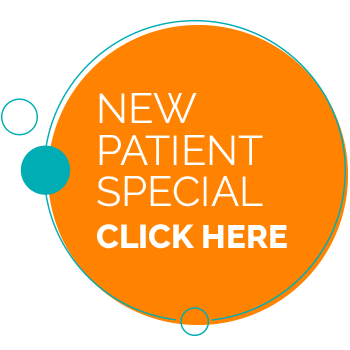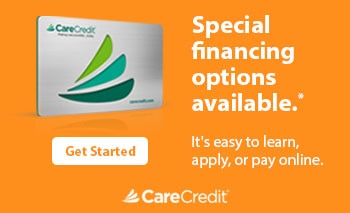Could Upper Crossed Syndrome Be Causing Your Neck Pain? Your Knoxville TN Has The Solution
Could Upper Crossed Syndrome Be Causing Your Neck Pain? Your Knoxville TN Chiropractor Has The Solution

Clinic Hours
Monday: 8:30am - 12:00pm | 3:00pm - 6:30pm
Tuesday: 3:00pm - 6:30pm
Wednesday: 8:30am - 12:00pm | 3:00pm - 6:30pm
Thursday: 3:00pm - 6:30pm
Friday: 8:30am - 12:00pm
Saturday: Closed
Sunday: Closed
Clinic Hours
Monday: 8:30am - 12:00pm |
3:00pm - 6:30pm
Tuesday: 3:00pm - 6:30pm
Wednesday: 8:30am - 12:00pm |
3:00pm - 6:30pm
Thursday: 3:00pm - 6:30pm
Friday: 8:30am - 12:00pm
Saturday: Closed
Sunday: Closed
What is upper crossed syndrome?
A common cause of neck pain in Knoxville TN may be due to muscle imbalances in the neck, shoulders, and chest. These imbalances occur frequently with prolonged sitting at a desk, reading, or cell phone use. Though the symptoms of upper crossed syndrome and the activities leading to it are common, this condition is never normal and requires treatment to avoid further problems. Luckily this condition is very treatable with chiropractic treatment along with specific exercises.
What causes Knoxville TN upper crossed syndrome?
In the last 50 years, the majority of people have completely changed our daily activities and posture of the spine. Most of us, sit for hours leaning forwarding to look at a computer screen, or drive long distances, or look down at phones. Though these advances in technology have made life easier in many ways it often wreaks havoc on our spine. With prolonged forward head posture the cervical spine develops anterior head carriage. Ideally the cervical spine should have a 45 degree forward curve (lordosis) with the top of the neck (C1) directly over the bottom of the neck (C7). This ideal structure allows for optimal support of the spine and allows for forces to dissipate throughout the spine with lifting, movements, and forces such as trauma. When anterior head carriage develops the spine loses its inherent structural support so the body must compensate. Anterior head carriage causes the head to go forward and down, therefore increased cervical lordosis is required to keep the head up. This in turn leads to increased backwards curve or kyphosis in the thoracic spine to keep the body from tilting over. These structural changes cause muscular imbalances that are a main source of pain in the upper crossed condition.
New Patient
Special Offer
Complimentary Consultation
Muscles involved
- Weak cervical flexors
- Weak rhomboid/lower trapezius
- Tight suboccipitals/upper trapezius/levator
- Tight Pectoralis muscles
The condition gets its name due to the weakened and tightened muscles forming a crossed pattern. As anterior head carriage occurs, the cervical spine takes a resting flexed position so the cervical flexor muscles become weak due to lack of use. To prevent the head from constantly looking down, the suboccipital (muscles at the base of the skull) and upper trapezius muscles are over engaged, causing the typical tightness and soreness at the upper trapezius and base of the neck. The structural hyperkyphosis compensation causes weak rhomboids and lower trapezius muscles. The pectoral muscles become tighter due to the fact that they must work harder to adduct the shoulders with the compensating tight trapezius and levator muscles.
Treatment for Upper Crossed Syndrome in Knoxville TN
Treatment for upper crossed syndrome includes three approaches. The first involves correcting the poor posture habits that lead to severe symptoms.
- Chiropractic manipulation at Rocky Top Chiropractic will restore normal pain free range of motion within the cervical spine and promote proper musculoskeletal function. Cervical traction based on Chiropractic Biophysics Technique is an effective method of restoring the normal cervical curvature and ideal spinal alignment.
- Standing desks may help avoid prolonged sitting and anterior head carriage. Also bring tech devices up with the arms instead of prolonged looking down to prevent anterior head carriage.
- Use stretching and strengthening exercises to target the involved muscle groups.
Stretching
Use the wall or a doorframe to stretch those tight pectoral muscles. Hold for 10-20 seconds. Repeat 3 times.
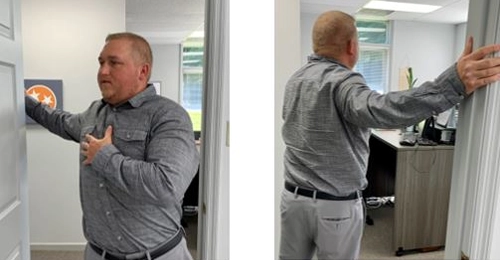
Stretch the neck by using the right hand and bring to the left side of the head and pull over to maximum range of motion for 10-20 seconds. Repeat 3 times.
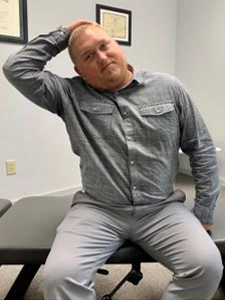
Strengthen muscles using the row machine or bands to bring the arms back forcing the chest open and scapula back.
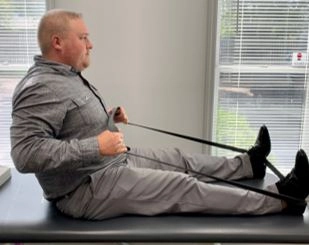
For more information on dealing with your neck pain call Rocky Top Chiropractic at (865) 444-5994.

